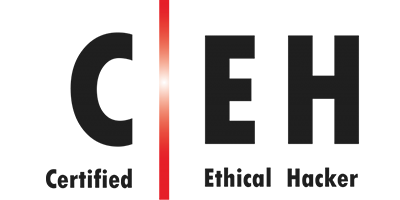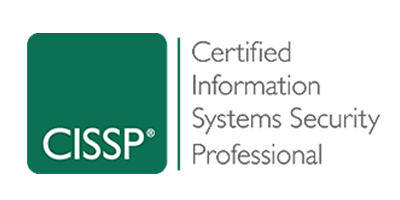Course
Bug Bounty
Course
Bug Bounty
Course Introduction
Welcome to the Bug Bounty Program by Stem Avishkar Mysuru!
This course is designed for aspiring ethical hackers, cybersecurity enthusiasts, and anyone interested in learning how to identify and report security vulnerabilities in web applications, mobile apps, and digital platforms.
With the growing demand for cybersecurity professionals, bug bounty programs offer a unique opportunity to earn rewards while making the internet a safer place. Whether you’re a beginner or have some experience in hacking, this course will equip you with practical skills, tools, and methodologies used by professionals in the field.
Course Overview
The Bug Bounty course by Stem Avishkar Mysuru offers a comprehensive introduction to the world of ethical hacking and cybersecurity. Designed for beginners and tech enthusiasts, this course takes you through the fundamentals of bug bounty hunting, including understanding web vulnerabilities, using essential tools, and mastering responsible disclosure practices. Over the span of four weeks, learners will engage in practical hands-on sessions, exploring real-world scenarios and popular vulnerabilities such as SQL Injection, Cross-Site Scripting (XSS), and Insecure Direct Object References (IDOR). The course also covers methodologies for reconnaissance, manual testing, and effective bug reporting.



COURSE MODULES
-
Module 1: Introduction to Bug Bounty
What is a Bug Bounty?
-
Overview of Bug Bounty programs.
-
Popular bug bounty platforms: HackerOne, Bugcrowd, Synack, Open Bug Bounty.
-
Importance of bug bounty programs in cybersecurity.
Ethical Hacking and Responsible Disclosure -
Ethical hacking principles.
-
Responsible disclosure vs. black hat techniques.
-
Legal and ethical considerations when participating in bug bounty programs.
Module 2: Fundamentals of Web Security
Overview of Web Application Security
-
Web application architecture: client-server model, HTTP/HTTPS protocols, web servers, databases.
-
Web application attack surface: APIs, cookies, sessions, forms, and authentication
mechanisms.
Web Application Vulnerabilities -
OWASP Top 10 vulnerabilities:
-
Injection (SQL Injection, OS Command Injection)
-
Broken Authentication and Session Management
-
Cross-Site Scripting (XSS) (Stored, Reflected, DOM-based)
-
Cross-Site Request Forgery (CSRF) Insecure Deserialization
-
Security Misconfiguration Sensitive Data Exposure Insufficient Logging & Monitoring Broken Access Control
-
Using Components with Known Vulnerabilities
Module 3: Setting Up Your Bug Bounty Lab
-
Tools for Bug Bounty Hunting
-
Web Application Proxies: Burp Suite, OWASP ZAP, Fiddler.
-
Network Sniffing: Wireshark, tcpdump. Reconnaissance Tools: Sublist3r, Amass, Gobuster. Vulnerability Scanners: Nikto, Nmap.
-
Automated Testing Tools: Acunetix, w3af, and others.
Creating a Test Environment
-
Setting up virtual machines using VMware/VirtualBox.
-
Deploying vulnerable web applications for practice (e.g., DVWA, WebGoat, Hack The Box).
-
Configuring Proxies and VPNs
-
Using Burp Suite for intercepting traffic. Configuring VPNs for anonymity and secure access.
Module 4: Bug Bounty Hunting Methodology
-
Reconnaissance and Information Gathering
-
Passive Reconnaissance: Google dorking, WHOIS lookups, DNS enumeration.
-
Active Reconnaissance: Scanning for open ports, services, and vulnerabilities (using Nmap, Nikto, etc.).
-
Identifying subdomains and gathering metadata.
Identifying and Exploiting Vulnerabilities -
Injection Attacks: SQL Injection, Command Injection.
-
Cross-Site Scripting (XSS): Stored, Reflected, DOM-based XSS.
-
Cross-Site Request Forgery (CSRF). Server-Side Request Forgery (SSRF).
-
Sensitive Data Exposure: Man-in-the-middle attacks, unencrypted traffic. Authentication & Session Management: Weak passwords, broken session
-
management, JWT token manipulation.
-
Privilege Escalation: Horizontal and vertical privilege escalation in applications.
Advanced Vulnerabilities -
XML External Entity (XXE) attacks.
-
File Upload Vulnerabilities. OpenRedirects.
-
Insecure Direct Object References (IDOR). Broken Access Control.
Module 5: Exploiting and Reporting Bugs
Exploitation Techniques
-
Bypassing input validation. Exploiting authentication flaws.
-
Exploiting vulnerabilities in APIs (REST, SOAP).
-
Exploiting improper access controls.
Bug Bounty Reporting Process -
Understanding the reporting format.
-
Writing effective bug reports.
-
Providing proof of concept (PoC): How to craft useful PoCs for vulnerabilities. Reproducing bugs for the target organization’s developers.
-
Understanding the importance of details (steps, screenshots, video demos).
Common Mistakes to Avoid in Bug Bounty Reports -
Providing insufficient information.
-
Failing to verify the impact or severity of the vulnerability.
-
Not considering the business context of the vulnerability.
Module 6: Networking and Understanding Bug Bounty Platforms
Bug Bounty Platforms Overview
-
Differences between HackerOne, Bugcrowd, Synack, and other platforms.
-
Exploring bug bounty platforms: Creating profiles, understanding program rules.
-
Types of programs: Public vs. private programs.
-
Bug bounty scopes and boundaries: What is in scope and out of scope.
Rules of Engagement
-
Understanding program terms, conditions, and scope.
-
What to do when you find a vulnerability within the scope. Dealing with false positives and rejected reports.
-
Building a Reputation on Bug Bounty Platforms
-
How to build a profile and reputation. Increasing your rank and credibility.
-
Engaging with the community, sharing knowledge, and learning from others.
Module 7: Advanced Bug Bounty Techniques
Advanced Web Application Attacks
-
Blind SQL injection techniques.
-
Advanced XSS techniques (DOM-based, using third-party scripts). Exploiting race conditions in web apps.
-
Advanced CSRF payloads.
API Security -
Common API vulnerabilities: Insecure endpoints, lack of authentication, rate-limiting issues.
-
Using tools like Postman and Burp Suite for API testing.
-
Common API security standards: OAuth, OpenID, JWT.
Mobile Application Security -
Common mobile app vulnerabilities.
-
Mobile app reverse engineering and analysis. Testing mobile app APIs and local storage.
Cloud Security -
Finding vulnerabilities in cloud services and storage (e.g., AWS, Azure, Google Cloud).
-
Testing misconfigurations in cloud infrastructure.
Module 8: Developing Bug Bounty Hunting Skills
Understanding and Participating in CTFs
-
Capture the Flag (CTF) challenges as practice for bug bounty hunting. Platforms for CTF practice: Hack The Box, TryHackMe, OverTheWire, CTF365.
Building and Customizing Tools -
Writing your own web scraping or automation scripts in Python. Customizing Burp Suite extensions.
-
Writing exploit scripts and automating some attack vectors.
Continuous Learning and Staying Updated -
Reading security blogs, reports, and advisories.
-
Participating in web security communities (Reddit, StackOverflow, Twitter).
-
Following vulnerability feeds and open-source security projects.
Module 9: Legal and Ethical Considerations
Legal Issues in Bug Bounty
-
Understanding the laws around hacking and bug bounty.
-
Different countries’ perspectives on ethical hacking and reporting vulnerabilities.
-
How to avoid legal risks and remain within the bounds of the law.
Responsible Disclosure
-
Ethical considerations when finding vulnerabilities.
-
Working with companies for responsible disclosure and patching.
-
Respecting privacy and confidentiality.
Module 10: Career Development in Bug Bounty
Bug Bounty as a Career
-
Transitioning from hobbyist to professional bug bounty hunter.
-
Building a portfolio with documented successful bug reports.
-
Creating an online presence: Blogging, sharing findings, contributing to forums.
Monetizing Bug Bounty Hunting -
Understanding payouts and how bug bounty programs compensate.
-
Earning income from participating in multiple bug bounty programs.
Freelancing and Consultancy -
Becoming a freelance security researcher or consultant.
-
Collaborating with organizations on custom security audits.
Practical Hands-On Lab Sessions
-
Participating in Real Bug Bounty Programs Joining open bug bounty programs on platforms like HackerOne, Bugcrowd.
-
Submitting reports and interacting with the program managers.
Hack The Box / TryHackMe Integration -
Engaging in practical CTF challenges that mirror bug bounty vulnerabilities.
-
Testing different exploitation techniques in a safe environment.
ENQUIRY FORM
STEM AVISHKAR PVT LTD
At STEM Avishkar Pvt Ltd, we revolutionize education by integrating cutting-edge technology with hands-on innovation. Our programs in Robotics, AI, IoT, Drone Technology, AR, VR, and 3D Printing inspire creativity and critical thinking in K-12 students.
Services
- Robotics & Automation
- IoT & Smart Technologies
- Drone Engineering
- AR/VR Development
- 3D Design & Printing
- Coding & Software Development
- Cyber security, Workshops and Bootcamps and Expo & Competitions.
Contact Number
+91 90360 41555
Address
No. 1256, 2nd Cross Road, Krishnamurthy Puram, Mysuru, Karnataka 570004
Designed & Developed By
Chanakya Solutions
